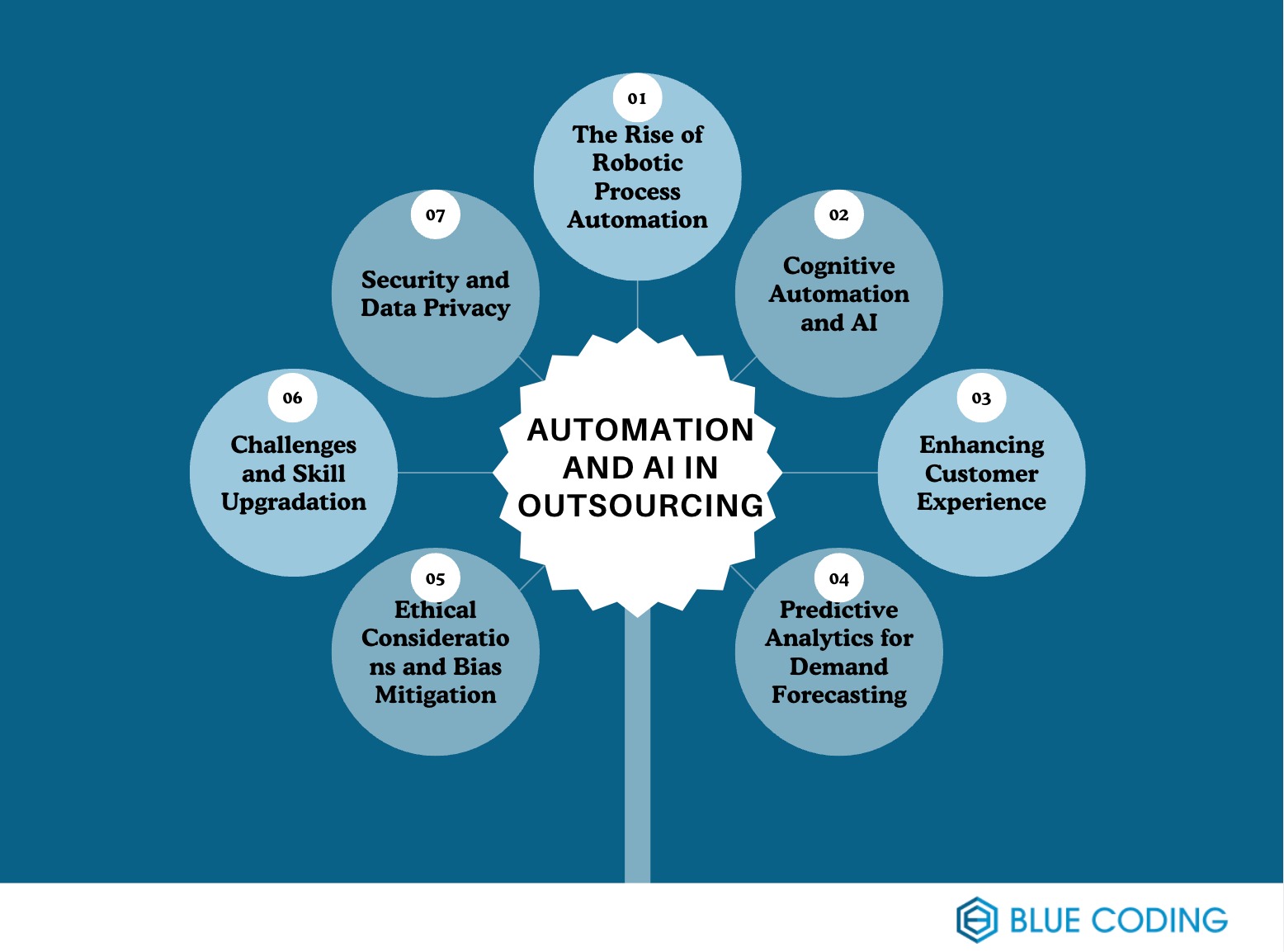 News
News
IT outsourcing has become a core business strategy for companies worldwide, enabling them to contract third-party providers to manage essential technology services. From software development to data management and IT support, companies have increasingly embraced outsourcing to streamline costs, access specialized expertise, and improve operational efficiency. Originally, IT outsourcing was dominated by offshore models that emphasized cost-cutting. However, it has evolved into a sophisticated global industry that now supports a range of onshore, nearshore, and offshore models tailored to meet varying business needs.
Today, IT outsourcing is valued for more than just its cost benefits. It offers agility and scalability, enabling companies to respond more quickly to shifting market demands and technological advancements. As companies compete in an increasingly digital world, the flexibility of outsourcing gives them the ability to stay ahead without the challenges of in-house hiring or development. According to recent data, the global IT outsourcing market is on a strong growth trajectory, projected to reach over $500 billion by 2025. This growth is driven by companies’ need to access specialized skills and technology innovations, particularly in AI, data analytics, and cybersecurity.
Looking to 2025
As we look ahead to 2025, the question arises: How will the IT outsourcing tech markets continue to evolve? With technological advancements accelerating and global economic conditions shifting, companies are rethinking their outsourcing strategies to prioritize not only cost but also proximity, expertise, and flexibility. We’ll explore emerging trends, including the rising popularity of nearshore outsourcing, the growing demand for specialized skills, and how automation and AI are reshaping the outsourcing landscape. This article aims to provide insights into what businesses can expect from the IT outsourcing market by 2025, helping them to make strategic decisions that align with future industry developments.
Key Trends Shaping the IT Outsourcing Market in 2025
Increasing Demand for Nearshore Outsourcing
Nearshore outsourcing involves contracting service providers in nearby countries with similar time zones, cultural compatibility, and geographic proximity. This model offers several advantages over traditional offshore outsourcing, including real-time collaboration, enhanced communication, and faster response times. These factors make nearshore outsourcing a particularly attractive option for companies in the U.S. and Canada, who can work with Latin American teams without facing significant language or cultural barriers.
Growth in Latin America
Latin America is quickly establishing itself as a global hub for IT outsourcing, driven by a well-educated workforce, competitive labor costs, and government-backed initiatives to develop technology talent. Companies like Blue Coding are leveraging Latin America’s booming tech scene, offering high-quality services that capitalize on the region's tech-savvy professionals. Countries such as Brazil, Mexico, and Colombia are leading the charge, showing consistent growth in their tech sectors and investments in IT infrastructure.
Statistics
According to recent studies, nearshore outsourcing in Latin America has been growing by approximately 20% annually, largely fueled by North American companies looking to reduce costs without compromising quality. As of the latest data, over 70% of U.S.-based tech companies are considering or have already moved their outsourcing needs to Latin America, citing both time zone advantages and proximity as key decision factors. By 2025, Latin America is expected to capture a larger share of the IT outsourcing market, as companies continue to favor nearshore partners.
The Rise of Specialized Outsourcing
Niche Skills in Demand
With the rapid evolution of technology, there’s an increasing need for specialized expertise in areas such as artificial intelligence (AI), cybersecurity, blockchain, and the Internet of Things (IoT). This demand is giving rise to specialized outsourcing providers that focus on these specific, high-demand fields, offering deep expertise that companies may lack in-house.
Companies’ Need for Specialized Skills
Many companies find it challenging to recruit and retain talent in highly specialized areas due to high competition and rapidly changing skill requirements. Outsourcing these roles to specialists enables businesses to tap into expertise without the long-term commitment and cost associated with hiring full-time employees. This approach is particularly valuable for companies undertaking projects with advanced technical requirements.
Forecast for 2025
Experts predict that by 2025, the demand for specialized outsourcing companies will continue to grow, especially for skills related to AI, machine learning, cybersecurity, and data science. Research suggests that the specialized IT outsourcing tech markets will see an annual growth rate of over 15% as companies seek out experts who can drive innovation and keep up with the pace of technological change.
AI and Automation in Outsourcing Processes

Automation Enhancements
Outsourcing providers are increasingly integrating AI and automation into their operations to streamline processes, enhance efficiency, and cut costs. Automation is particularly valuable in repetitive tasks like data entry, quality assurance, and technical support, allowing teams to focus on more complex, value-added activities. This adoption of automation is reshaping the outsourcing landscape, enabling faster project turnaround times and reducing operational costs for clients.
AI in Recruitment and Project Management
AI is also transforming how outsourcing companies recruit talent and manage projects. By using AI-driven tools, outsourcing providers can more effectively match skilled professionals to client needs, ensuring better project outcomes and higher client satisfaction. Additionally, AI-driven project management tools offer real-time updates and predictive insights, allowing for smoother workflows and proactive risk management.
Predicted Impact by 2025
By 2025, automation in outsourcing processes is expected to yield significant cost savings. Industry estimates project that companies could save up to 30% in operational costs by adopting AI for routine and high-volume tasks. Furthermore, AI’s role in project management and recruitment is anticipated to reduce project timelines by an average of 20%, allowing outsourcing providers to handle a larger volume of work with improved efficiency.
The Role of Technology and Digital Transformation in IT Outsourcing’s Future
As businesses across industries undergo digital transformation, the demand for outsourced IT services is expected to grow substantially. Companies are increasingly shifting their operations online, automating processes, and leveraging digital tools to stay competitive. However, this transformation requires specialized skills and technology infrastructures, which are often best accessed through outsourcing. Many businesses, from startups to large enterprises, are finding that outsourcing provides a cost-effective way to meet digital demands while allowing them to focus on core competencies. A recent Gartner report shows that nearly 80% of companies have increased their digital initiatives in the past two years, a trend projected to drive IT outsourcing growth through 2025.
Cloud Adoption and Remote Work
The rise of cloud computing and remote work has significantly influenced the IT outsourcing landscape. Cloud technology enables companies to store, manage, and access data securely and efficiently, making it an ideal fit for outsourced IT services. Outsourcing providers are increasingly helping companies transition to cloud environments, providing services for cloud architecture, data migration, and ongoing management. Additionally, with remote work now a global standard, companies have become more open to collaborating with outsourced teams. The flexibility of cloud-based infrastructure enables outsourced teams to work seamlessly alongside in-house staff, promoting productivity and collaboration across distributed workforces.
Investment in Collaborative Technologies
To support these evolving work models, businesses and outsourcing providers are investing heavily in collaborative technologies. Digital project management platforms such as Jira, Trello, and Asana, as well as communication tools like Slack and Microsoft Teams, have become essential in managing distributed teams. These platforms facilitate real-time updates, task tracking, and transparent communication, making it easier for companies to manage outsourced projects effectively. By 2025, it’s expected that the majority of outsourced IT projects will leverage collaborative technology, helping to improve project transparency, accountability, and efficiency.
Data-Driven Decisions and Predictive Analytics
Data-driven insights and predictive analytics are becoming central to optimizing outsourcing relationships. Using data to analyze project performance, identify potential risks, and anticipate challenges enables outsourcing providers and their clients to make more informed decisions. Predictive analytics, for example, can forecast project timelines, resource requirements, and potential bottlenecks, helping companies better manage costs and timelines. This data-centric approach to outsourcing is particularly beneficial in areas such as software development and customer support, where performance metrics and user feedback drive continuous improvement. By 2025, data-driven outsourcing strategies are expected to become standard, with companies increasingly relying on predictive analytics to guide decision-making and ensure better project outcomes.
Key Takeaways
Growing Demand for IT Outsourcing: As digital transformation accelerates, businesses increasingly rely on outsourced IT services to access specialized skills and maintain competitiveness.
Nearshore Outsourcing on the Rise: With the benefits of proximity and cultural compatibility, nearshore outsourcing trends in regions like Latin America are becoming a preferred option, especially for North American companies.
Impact of Cloud Adoption and Remote Work: The shift to cloud-based infrastructure and remote work models enhances the feasibility and appeal of outsourcing, enabling seamless collaboration across distributed teams.
Future Outlook: By 2025, IT outsourcing will continue evolving with advances in technology, greater reliance on data, and growing demand for both nearshore and specialized outsourcing trends models.
Ready To Start Outsourcing In 2025?
If you’re looking to expand your team with Latin American talent and hire remote developers in 2025, you’re at the right place. At Blue Coding, we’ve been leading the outsourcing market for over 10 years, thoroughly committed to delivering the best ROI and costumer service to each of our clients. Our team can help you connect with the best, most affordable talent available. Contact us today to schedule a free consultation!



